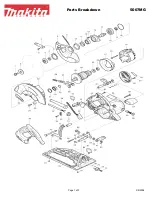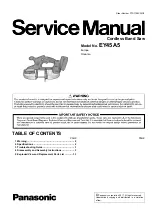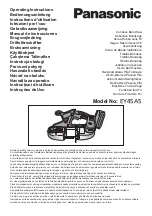
8 GB
b)
Avoid touching earthed surfaces such as
pipes, radiators, ovens and refrigerators
with any part of your body.
There is an in-
creased risk of electric shock if your body is earthed.
c)
Keep the device away from
rain or moisture.
Water entering
an electrical device increases the risk
of electric shock.
d)
Do not use the mains lead for
any purpose for which it was
not intended, e.g. to carry the
device, to hang up the device or to pull
the mains plug out of the mains socket.
Keep the mains lead away from heat,
oil, sharp edges or moving parts of the
device.
Damaged or tangled mains leads in-
crease the risk of electric shock.
e)
When working outdoors with an electri-
cal power tool always use extension ca-
bles that are also approved for use out-
doors.
The use of an extension cable suitable for
outdoor use reduces the risk of electric shock.
3. Personal safety
a)
remain alert at all times, watch what you
are doing and always proceed with cau-
tion. Do not use the device if you are tired
or under the influence of drugs, alcohol or
medication
. One moment of carelessness
when using the device can lead to serious injury.
b)
Wear personal protective
equipment and always
wear safety glasses.
The
wearing of personal protective equipment such
as dust masks, non-slip safety shoes, safety
helmets or ear protectors, appropriate to the
type of electrical power tool used and work
undertaken, reduces the risk of injury.
c)
Avoid unintentional operation of the de-
vice. Make sure that the switch is in the
“oFF” position before you insert the
mains plug into the mains socket.
Acci-
dents can happen if you carry the device with your
finger on the switch or you have already switched
the device on before you connect it to the mains.
d)
remove any setting tools or spanners
before you switch the device on.
A
tool or spanner left attached to a rotating part
of a device can lead to injury.
e)
Do not overestimate your own abili-
ties. Keep proper footing and balance
at all times
. By doing this you will be in a
better position to control the device, especially
in unforeseen circumstances.
f)
Wear suitable clothing. Do not wear
loose clothing or jewellery. Keep your
hair, clothing and gloves clear of mov-
ing parts.
Loose clothing, jewellery or long
hair can become trapped in moving parts.
g)
If vacuum dust extraction and collec-
tion devices are fitted do not forget to
check that they are properly connect-
ed and correctly used.
The use of these
devices reduces the hazard presented by dust.
4. Careful handling and use of
electrical power tools
a)
Do not overload the device. Always use
an electrical power tool that is intended
for the task you are undertaking.
By us-
ing the right electrical power tool for the job you
will work more safely and achieve a better result.
b)
Do not use an electrical power tool if
its switch is defective.
An electrical pow-
er tool that can no longer be switched on and
off is dangerous and must be repaired.
c)
Pull the mains plug from the socket be-
fore you make any adjustments to the de-
vice, change accessories or when the de-
vice is put away.
This precaution is intended to
prevent you from unintentionally starting the device.
d)
When not in use always ensure that
electrical power tools are kept out of
reach of children. Do not let anyone use
the device if he or she is not familiar
with it or
has not read the instructions
and advice.
Electrical power tools are danger-
ous when they are used by inexperienced people.
e)
Look after the device carefully. Check that
moving parts are working properly and
General safety advice
Summary of Contents for PFS 710 A
Page 2: ...4 7 8 A B C D E F 2 3 6 5 1 9 11 10 6 12...
Page 20: ...22...







































